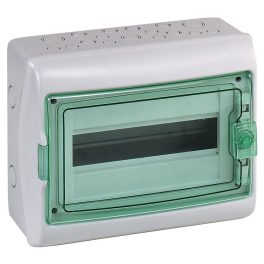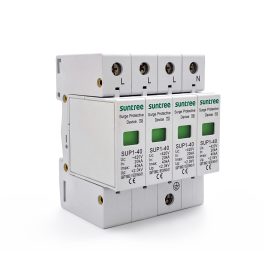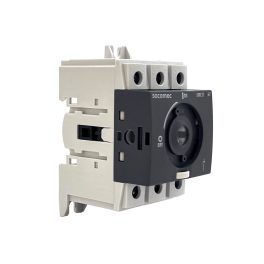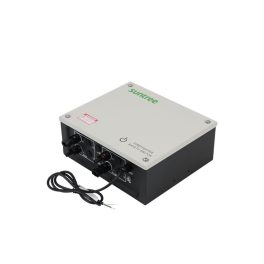Electrical protection
Electrical Protection: Safeguarding Your Home and Business
Electricity is a fundamental part of modern life, powering our homes, businesses, and industries. While electricity is essential, it also poses inherent risks that need to be managed effectively. Electrical protection, in the context of electrical systems, refers to a set of measures and devices designed to ensure the safety of individuals, property, and equipment from electrical hazards. In this comprehensive guide, we will explore the world of electrical protection, highlighting its importance, key components, types of protection, and best practices for safeguarding your home and business from electrical dangers.
The Importance of Electrical Protection
Electrical protection is of paramount importance as it serves several crucial purposes:
1.1 Safety: The primary goal of electrical protection is to prevent electrical accidents, which can result in injury or even death. Electrical protection measures ensure that electricity is safely controlled and managed.
1.2 Property Protection: Electrical faults and short circuits can lead to fires, damaging property and assets. Proper electrical protection minimizes the risk of electrical fires and related losses.
1.3 Equipment Protection: Electrical equipment and appliances are susceptible to damage from electrical surges or faults. Electrical protection devices help extend the lifespan of valuable equipment.
1.4 Compliance: Adhering to electrical safety codes and standards is a legal requirement in many regions. Proper electrical protection ensures compliance with these regulations.
Key Components of Electrical Protection
2.1 Circuit Breakers: Circuit breakers are vital components of electrical protection systems. They automatically interrupt electrical circuits in the event of overcurrent or short circuits, preventing damage to the circuit and connected devices.
2.2 Surge Protectors: Surge protectors safeguard electronic devices from voltage spikes and surges, which can occur during lightning strikes or utility power fluctuations.
2.3 Ground Fault Circuit Interrupters (GFCIs): GFCIs monitor the flow of electricity in a circuit and quickly interrupt it if they detect a ground fault, preventing electric shocks.
2.4 Arc Fault Circuit Interrupters (AFCIs): AFCIs detect dangerous electrical arcs that can cause fires and interrupt the circuit to mitigate the risk.
2.5 Electrical Panels: Electrical panels, also known as breaker boxes, house circuit breakers and other protection devices. They distribute electricity safely throughout a building.
Types of Electrical Protection
3.1 Overcurrent Protection: Overcurrent protection safeguards against excessive current flow that can damage electrical equipment and cause fires. Circuit breakers and fuses provide this type of protection.
3.2 Surge Protection: Surge protection prevents voltage spikes from damaging sensitive electronic devices. Surge protectors are commonly used in homes and offices.
3.3 Ground Fault Protection: Ground fault protection devices, like GFCIs, detect imbalances in current flow between the hot and neutral wires and disconnect the circuit to prevent electric shocks.
3.4 Arc Fault Protection: AFCIs are designed to detect and mitigate arc faults, which are a leading cause of electrical fires in homes and commercial buildings.
Best Practices for Electrical Protection
4.1 Regular Inspections: Regularly inspect and maintain electrical systems to identify and address potential issues before they become hazards.
4.2 Proper Wiring: Ensure electrical wiring is correctly installed, and use high-quality materials to reduce the risk of electrical fires.
4.3 Use of Protective Devices: Install circuit breakers, surge protectors, GFCIs, and AFCIs where necessary to provide multiple layers of protection.
4.4 Training and Education: Educate individuals working with or around electricity on safety practices and procedures.
4.5 Emergency Preparedness: Develop and communicate emergency procedures in case of electrical accidents or failures.
Chapter 5: Emerging Trends in Electrical Protection (200 words)
5.1 Smart Electrical Protection: Advances in technology are enabling the development of smart electrical protection systems that provide real-time monitoring and remote control of electrical circuits for enhanced safety and energy efficiency.
5.2 Renewable Energy Integration: With the growing adoption of renewable energy sources, electrical protection systems are evolving to accommodate the unique challenges of integrating solar panels and wind turbines into existing electrical grids.
Conclusion
In conclusion, electrical protection is a critical aspect of electrical safety that cannot be overlooked. Whether at home or in a commercial setting, implementing proper electrical protection measures is essential for safeguarding lives, property, and valuable equipment. By understanding the importance of electrical protection, recognizing its key components, and following best practices, individuals and businesses can create a safer environment and reduce the risks associated with electrical hazards. As technology continues to advance, embracing emerging trends in electrical protection can further enhance safety and efficiency, paving the way for a future where electricity remains a powerful ally without compromising on safety.





